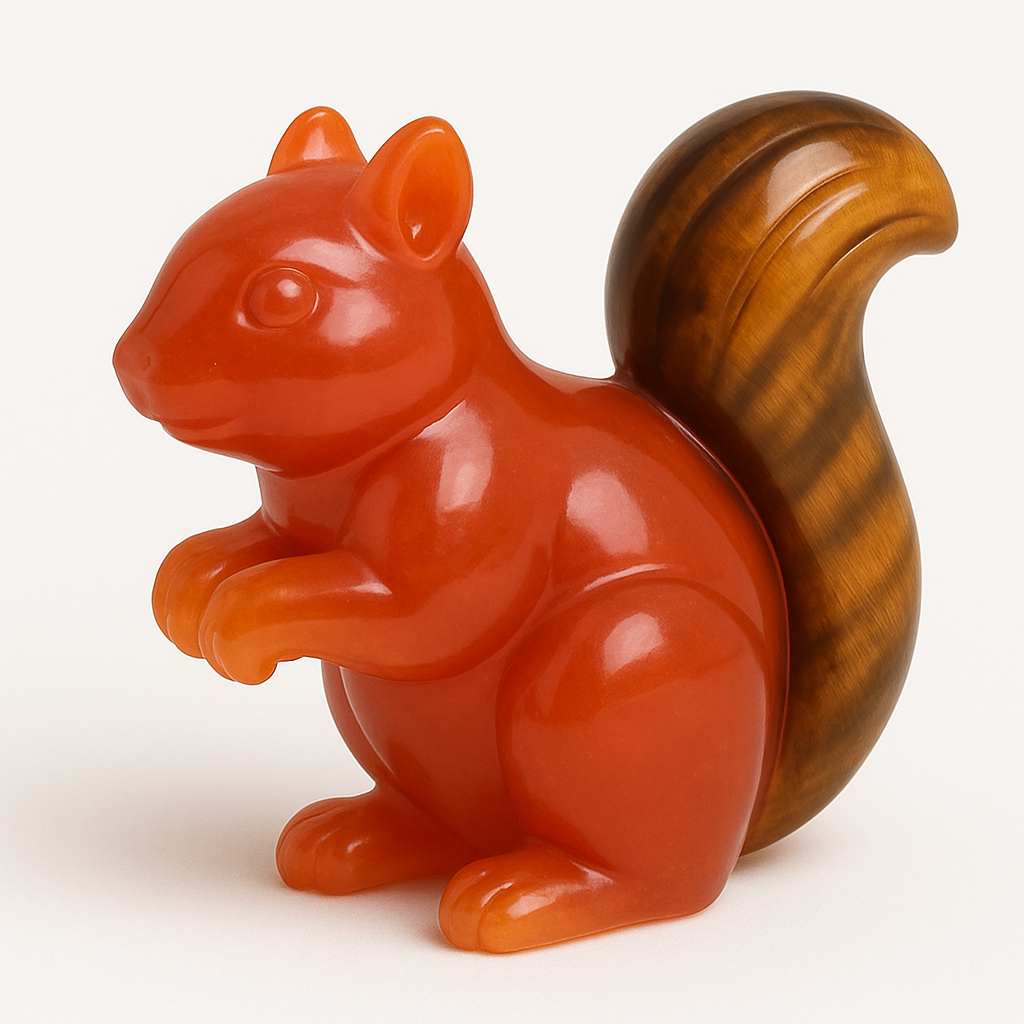
The Symbolism of Squirrels
Share
Quick-footed among branches, alert in stillness and in motion, the squirrel exists in a rhythm of preparation, curiosity, and joyful engagement with its environment. It is a creature of the in-between—dwelling neither fully on the ground nor entirely in the trees, navigating vertical and horizontal worlds with agility and ease. Its presence is not solemn, yet it is wise in its play, embodying an energy that is both lighthearted and highly attuned to the demands of physical life.
To contemplate the squirrel is to encounter the symbolic dance between gathering and releasing, movement and stillness, instinct and planning. It does not hoard mindlessly. It prepares. It does not act chaotically. It calculates through moment-to-moment awareness, balancing its energetic output with the ever-changing landscape around it.
From Forest Spirits to Household Observers
While the squirrel does not dominate the mythic canon like the lion or the dragon, its symbolic threads weave subtly through cultural memory.
In Norse cosmology, a squirrel named Ratatoskr ran along the great World Tree, Yggdrasil, carrying messages between realms—suggesting the squirrel as messenger and mediator, nimble among dimensions. In Indigenous traditions, particularly among North American tribes, the squirrel is seen as a totem of resourcefulness, preparation, and community care. It gathers not only for itself, but also models behavior that ensures future security—reminding the tribe of the value of foresight.
In modern consciousness, the squirrel often appears as a symbol of cleverness, adaptability, and lightness of spirit—one who takes life seriously enough to plan, but not so seriously as to lose its joy.
Kinetic Awareness and Inner Play
The behavior of the squirrel reflects a creature of constantly shifting attention, but not in confusion. It is attuned to subtle movements, changes in sound, and potential threats, yet also moves with confidence through uncertain terrain. It leaps without fear, often choosing the uncertain branch—not recklessly, but with trust in its body and its timing.
It stores food, creates hidden caches, and remembers them later. Its energy is not frantic, but focused in bursts, cycling between activity and retreat. This rhythm reflects a state of being that knows when to act and when to rest—when to gather, and when to simply be present.
There is also a layer of innate joy in the squirrel’s behavior—its play, its chattering, its aerial acrobatics. It is not weighed down by its work, but seems to move in concert with the abundance of its environment, a reminder that even survival can be joyful when approached with trust and adaptability.
Resonance with the Energy Centers
The squirrel aligns primarily with the orange-ray energy center—the sacral chakra, which governs individual expression, emotional flow, sensuality, and the energetic dance of self in relationship to environment.
This orange-ray resonance is seen in the squirrel’s expressive nature, its enjoyment of motion, and its attunement to rhythmic cycles—work and play, caution and courage, solitude and connection. The squirrel is not driven by social structure (yellow-ray) nor by primal aggression (red-ray), but by personal exploration and instinctive creativity within its physical surroundings.
There is a secondary resonance with the yellow-ray energy center, the solar plexus, particularly in its organizational intelligence—its ability to manage resources, prepare for the future, and navigate the boundaries of its territory. Though not dominant or hierarchical, the squirrel exhibits a sense of identity within space and time, and acts in accordance with patterns that ensure its wellbeing across seasons.
Together, these energy centers express as creative survival—the ability to engage joyfully with the material world while maintaining autonomy and foresight.
The Light Footed Keeper of the Present
The squirrel teaches the balance of preparing without fearing, of moving quickly while remaining grounded, and of engaging the physical world not with heaviness, but with delightful precision. It is a teacher of rhythm, of cycles, of honoring one’s energetic capacity without depletion.
It reminds the seeker that joy and survival are not separate—that one can leap across branches, store what is needed, and still play in the leaves. That movement, when aligned with intuition, becomes a dance rather than a task.
The squirrel does not hesitate when the leap is right.
It trusts the branch before it touches it.
In this, it becomes a symbol of confidence in motion,
and the freedom that arises when preparation meets presence.